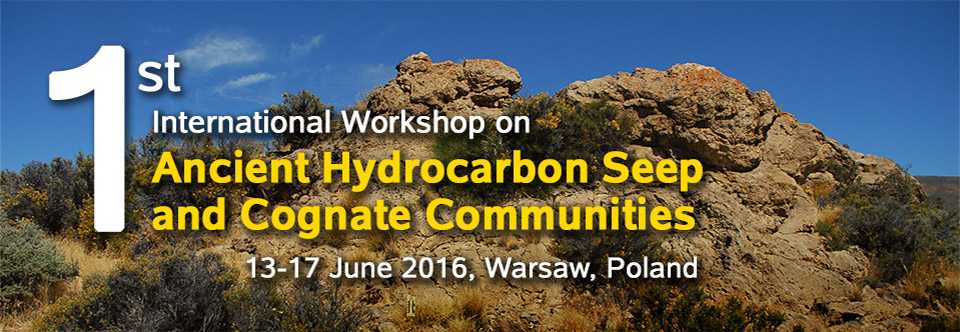
ATAVIACONCHA—A MIDDLE PALAEOZOIC SEEP SPECIALIZED BIVALVE?
Krzysztof HRYNIEWICZ1 and Michał JAKUBOWICZ2
1Institute of Paleobiology, Polish Academy of Sciences, ul. Twarda 51/55, 00-818 Warszawa, Poland; 2Institute of Geoecology and Geoinformation, Adam Mickiewicz University, ul. Dzięgielowa 27, 61-680 Poznań, Poland.
Corresponding author: krzyszth@twarda.pan.pl
Methane seep carbonates of the Middle Devonian (ca. 390 Ma) Hollard Mound yield mass accumulations of bivalves otherwise uncommon at Palaeozoic seeps. The dominant species in these accumulations is the modiomorphid Ataviaconcha wendti gen. et sp. nov. It is the second modiomorphid bivalve known from Palaeozoic chemosynthesis-based ecosystems, next to the roughly coeval Sibaya ivanovi Little, Maslennikov, Morris, and Gubanov, 1999, from the Sibay hydrothermal vent deposit in the Ural Mountains, Russia. Ataviaconcha wendti is very large for a Palaeozoic bivalve (> 100 mm in length), and is relatively large even when compared to much younger, Mesozoic and Cenozoic seep bivalves. Its characteristic feature is an elongated shell with boomerang shape. The elongated shell is reminiscent of that of some Mesozoic and Cenozoic semi-infaunal seep bivalves, such as species of the Mesozoic kalenterid Caspiconcha, Cenozoic vesicomyids like Adulomya spp. and “Ectenagena” extenta and the bathymodiolin Bathymodiolus boomerang, and we hereby interpret it as an adaptation to the seep environment. The boomerang-shaped shell is likely an adaptation helpful in movement and re-location at seeps. This new finding, together with a finding of the solemyid bivalve Dystactella? eisenmanni at the same seep site, show that bivalves are present at seeps for at least 390 Myr, and that the bivalve-dominated faunas predate the dimerelloid brachiopods at seeps. The early adaptation of some bivalves to seeps is probably related to a symbiosis-based metabolism allowing efficient exploitation of chemosynthetic food resources.
